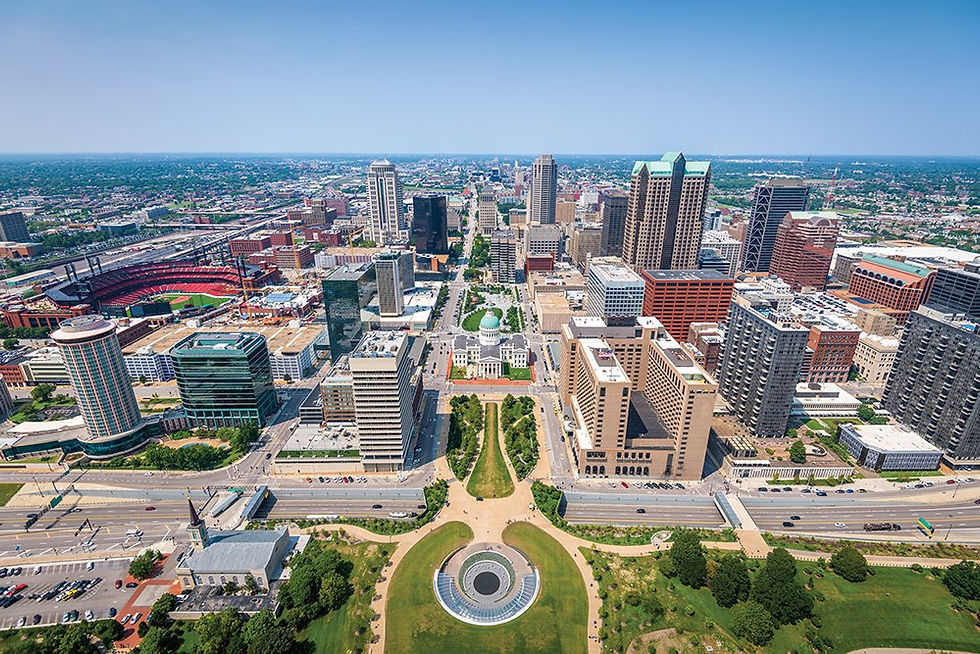All in Chains: The Gage Gallery’s new exhibit seeks to humanize
- Evi Arthur

- Nov 7, 2019
- 4 min read
Updated: Apr 22, 2023

"When I was walking through that tunnel at the U.S. port of entry I thought I was walking towards the gate of freedom. Little did I know, I was walking towards the gate of hell,” says a 33-year-old asylum seeker from Cameroon. His voice echoes through the near-empty Gage Gallery like the story of a Holocaust victim trapped behind the barriers of time in a museum—this is no museum.
Immigration has been a topic talked about since the very beginnings of the United States but has become a hot-button issue under the Trump administration. According to the Department of Homeland Security, the United States has 211 immigration detention centers, and in 2018, 396,448 people were detained in these centers.
This is what the Roosevelt University Gage Gallery’s new exhibit “Detained: Stories of Immigration Detention” seeks to portray, with photos of detention centers by Greg Constantine. The black and white photos of the centers line the walls, vinyl panoramas hung on steel bars of prison-like centers off in the distance. The grim photos are accompanied by the voices of formerly detained immigrants playing on a loop in the gallery. Taken from interviews with Constantine and read by CCPA opera students, the voices bring an eerie sense to the air, like a museum about a great human tragedy. The immigrants interviewed by Constantine have since been deported or let out of detention—dropped off at the nearby transportation (usually a bus station) with nothing but the clothes on their back. There is 49 minutes’ worth of audio that loops throughout the day
The exhibit, part of a project begun in 2016—just after the election—is an attempt to illustrate to Americans just how vast and desolate our immigration system is. “Does the U.S. public know that scattered across the landscape of the country exists a monolithie American Gulag system? I imagine they don’t,” Constantine said.

The panoramas on the walls show just 10 of the 211 centers in the U.S. Many of these centers sit just under our noses—three in Arizona; three in California; five in Texas; one in Otero, New Mexico; one in Youngstown, Ohio; one in Sheridan, Oregon; one in Tacoma, Washington. All of the centers like these are owned by corporations and are for-profit, much of the money goes to the federal government, according to Gage Gallery founding director Mike Ensdorf.
Inside of the centers are where the true horrors lie. A 41-year-old man from Nigeria detained in Otero for over a year remembers what it felt like to never hear his name in detention and only be referred to by the number on his bunk. “The workers at the detention center would say, ‘you guys are just numbers. You’re just numbers that make money for us,” he says.
Another vividly recalls being treated like a criminal. “When the first person got off the bus at Sierra Blanca, the officers grabbed him, slammed him against the wall and they hit him in the back of his head with an elbow blow shot,” says a 31-year-old asylum seeker from Somalia who was detained for 13 months. “He hadn’t done anything wrong.”
Ensdorf chose to show this project in the gallery in part because of his own family’s history of immigration. He tells the story of how his parents came to the United States from Germany so many years ago. Upon arriving in the states, they faced suspicion of being Hitler Youth because of their childhood in Nazi Germany. “I’m a first-generation American,” Ensdorf says. “It goes up against everything we are as a country.”
A woman detained in Taylor, Texas, for nearly five months remembers all of the women detained around her who attempted suicide in the detention center, including her cellmate. “A couple of times her depression got so bad she tried to jump off the second floor because she just couldn’t take being detained anymore,” the 25-year-old asylum seeker from Nicaragua says.
Jose, a 21-year-old asylum seeker from El Salvador, tells about a room called “the wolf” where detainees would be put when they were being punished. “The wolf” had no light and detainees would be kept in the room alone for over two weeks. “They would say things as if you were not a person,” he says. “Day after day these were the experiences that make you want to just give up.”
Despite the atrocities that take place in these centers, there are government officials still working to make life for asylum-seekers even harder. An immigration attorney named Brian who frequented centers like these to help detainees walk free remembers feeling like his client’s case was hopeless. “He doesn’t know that hundreds of miles away in our nation’s capital powerful, educated, highly-paid government lawyers are right now discussing strategies to make his case even harder to win, to make it even less likely he will ever walk free here in the U.S.”
Furthermore, President Trump continues to revile the people that come to this country looking for safety and prosperity. “Fifteen days after we arrived at Karnes we saw on the news that the president had said something about all of us being indefinitely detained,” says a 33-year-old asylum seeker from Honduras. “This was the lowest point for many of us.”
Detained for 6 months in the Karnes center in Texas, the man was separated from his 8-year-old son for 45 days while detained, unaware of where his son had been taken. “That was perhaps the most painful moment, when they were handcuffing me in front of my son,” he remembers.
“If anyone wants to know what hell looks like, just come and I’ll tell you what Otero looks like,” says the 33-year-old asylum seeker from Cameroon. “I will describe to you what the gates of hell look like.”




Comments